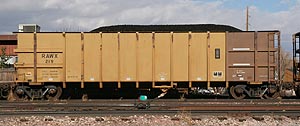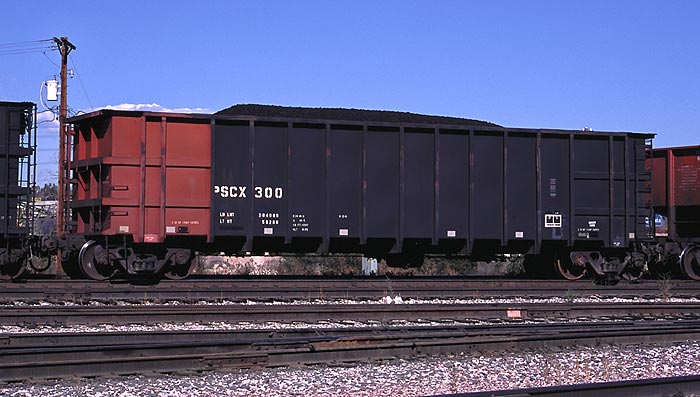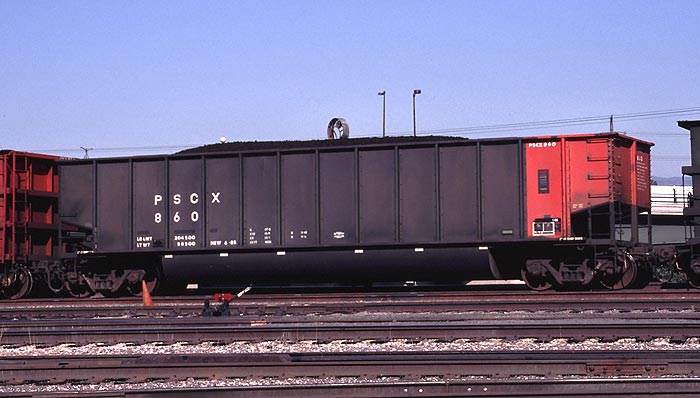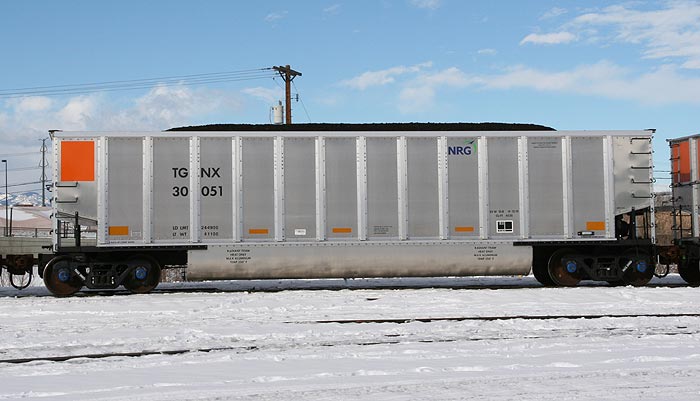
The development of the high capacity rotary dump gondola in the early 1970s led to huge efficiency gains in coal transportation compared to traditional manually-operated bottom-dump hopper cars. Rotary dump cars are cheap to manufacture and cheap to maintain since they have no moving parts other than the wheelsets, couplers, and brake rigging. They are generally lighter than bottom dumpers, which means increased coal capacity.
There are of course disadvantages for rotary dumpers. Although the railcars themselves are relatively cheap, the rotary dump infrastructure at the power plants is considerably more expensive than a bottom dump operation. The unloading process is also slower, since each railcar must be individually positioned inside the dumper. There are horror stories from power plants where their rotary dumper breaks down and the plant has to rent clamshell cranes to come in and scoop out their rotary coal cars while their rotary dumper is being repaired. It is definitely a bad scenario and large power plants will oftentimes have two rotary dumpers on site to allow some redundancy in the event that one of them is inoperable.
Rotary dump coal train railcar consists must always have the rotary ends oriented the same direction. If locomotives are used on both the front and rear of the train - and those locomotives stay on the train as it runs through the rotary dumper - then a "double rotary" railcar is required in the consist. The "double rotary" is just a rotary gondola with rotary couplers on both ends instead of just one end. This allows all the cars to the right of the double rotary to have rotary ends pointing towards the locomotives on that end of the train, while all the cars to the left of the double rotary have rotary ends pointing towards the locomotives on the opposite end of the train. Since locomotives don't have rotary couplers, the rotary railcars connecting to locomotives on each end of the train must have rotary couplers connecting to the locomotives. Hence the need for "double rotaries" on many trains. Note that "double rotary" cars are not required if locomotives on the non-rotary end of the train are uncoupled during unloading.
Rotary dump cars can be classified into several different types. Like all coal cars, there are the early steel-bodied versions and the newer aluminum-bodied versions. Most early rotary gondolas have high sides and flat bottoms. In the late 1970s, "bathtub" style gondolas became popular. The "bathtub" gondolas utilized the empty space between the wheelsets for additional capacity while also lowering center of gravity. There are two types of "bathtub" gondolas: those with a single tub (i.e. the Berwick Bathtubs and ACF Coalveyors) and those with two symmetrical tubs (i.e. the BethGon Coalporters).

PSCX 300 is a good example of a first-generation rotary dump gondola. It is steel-bodied with high sides and no tubs underneath. Built in 1975 by Darby for PSCO, this car and its sisters were some of the first rotary dump coal trains in the American West.

UFIX 5006 is an early tub-style rotary dump gondola. This is the single-tub design which was originally developed by Canadian Pacific in the late 1960s. This particular car is a Berwick version; ACF's Coalveyor was a similar design.

PSCX 860 is an example of the last generation of steel-bodied coal gondolas. This is a 4000 CUFT twin-tub Bethgon Coalporter built in 1985.

TGNX 30051 is a good example of a modern rotary dump gondola. It is aluminum-bodied with twin longitudinal tubs between the wheelets for increased capacity and a lower center of gravity. Buit in 2006 by FreightCar America, it is the latest evolution of the original BethGon Coalporter design.